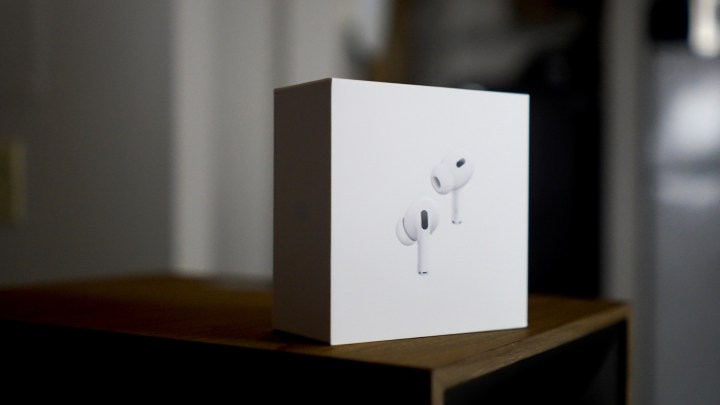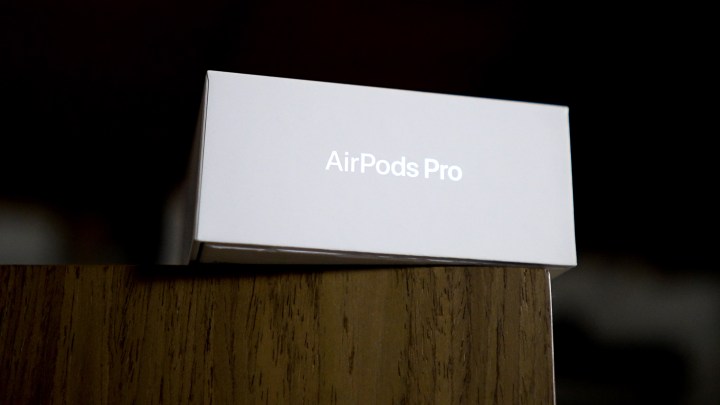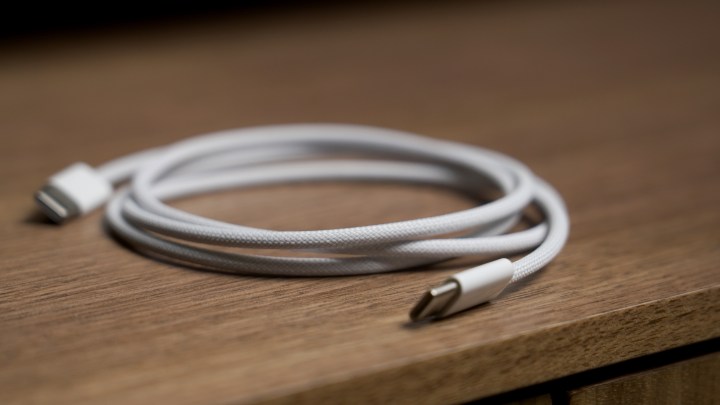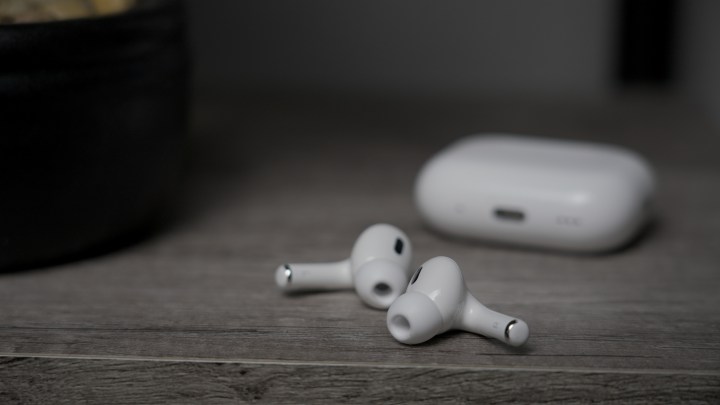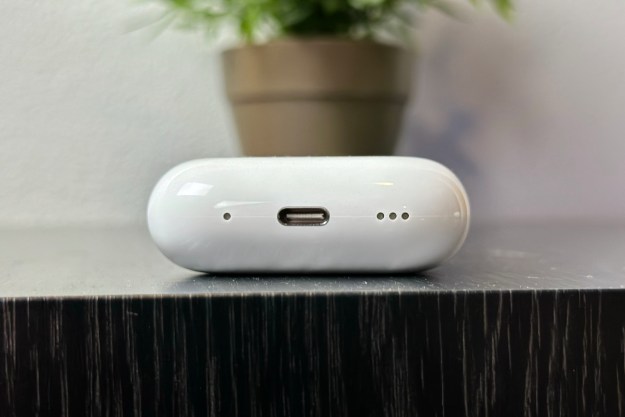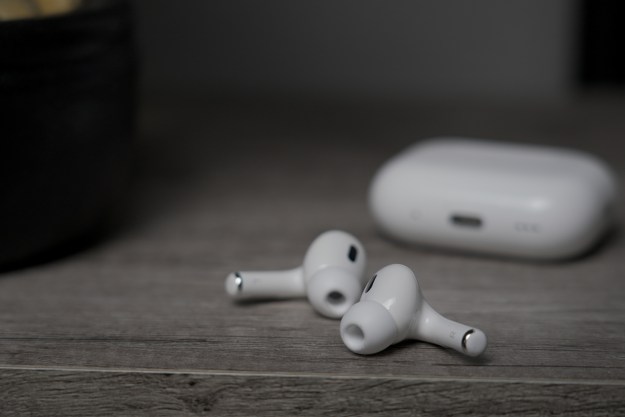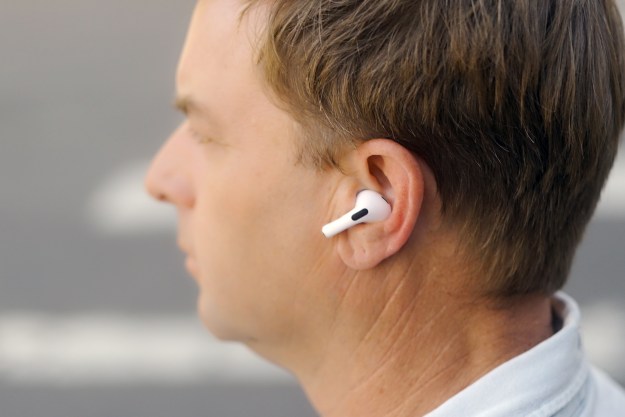
- Excellent noise canceling
- Best conversation mode we've tested
- Solid audio quality
- Capable of wireless lossless audio
- Yes, USB-C
- Best features only for Apple products
- Still no biofeedback
The new AirPods Pro 2 with USB-C and MagSafe charging are just the same AirPods Pro we had before, but with a different charging port, right?
No. That is not the correct take.
It’s not just about the new USB-C charging port and what comes with that. This latest version of the AirPods Pro 2 has as yet untapped potential that points to a pretty exciting future. I also want to use this review as an opportunity to talk about new features that are unlocked with iOS 17 and, as it happens, are also available on the AirPods Pro 2 with Lightning case that you may already own.
Ultimately, we’ll try to help you decide if you should run out and buy the new USB-C version, or if you are good sticking with the AirPods Pro you already own.
Video review
Out of the box
When you pop open the box and unwrap the new USB-C AirPods Pro, you will, of course, notice the USB-C port. But I was also pleased to see that not only is a USB-C to USB-C cable included, but it is braided at that. No more cheap rubber. I am really into cloth-covered cables these days, and I was legitimately delighted when I made this discovery. My 14-year-old daughter noticed, too, and she dug it as well, so I know I’m not the only one who thinks this is neat. I’m bringing my daughter into this because she made some astute observations that I want to share here — more on that in a moment.
Much ado about charging
I’ve heard plenty of haters clowning on this USB-C development, be it on the AirPods Pro, or the new iPhone 15, or back when the new iPads started featuring it. Yeah, it would have been nice to have this years ago — one can even argue that it would have been the environmentally responsible thing to do, and that Apple has only transitioned due to pressure from the EU. But if you’re trying to absolutely rake in the dough — as Apple has for some time — you make strategic decisions like requiring your customers to use a proprietary cable. I’m not saying I love it, but let’s not act like it was a stupid move.
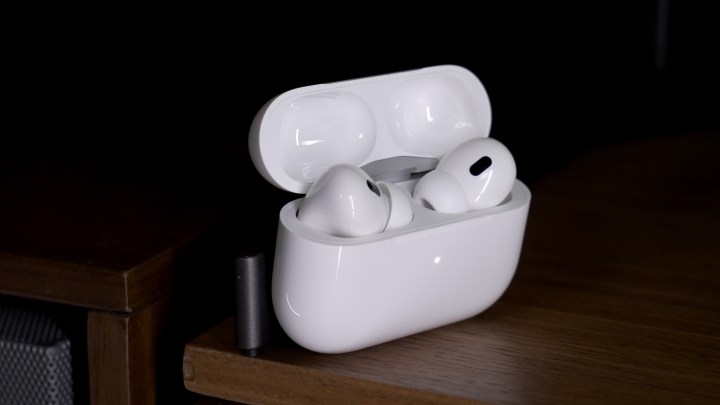
But those days are in the rearview mirror now. Apple is now all-in on USB-C. And in the case of the new AirPods Pro 2 — literally, in the case — this means you can move toward tossing your Lightning cables into that drawer or bin with all the other cables you can’t bring yourself to throw out.
You can now charge your AirPods with your iPhone 15 or Mac using your USB-C-to-USB-C cable, which might come in especially handy when you’re about to take a flight and your AirPods are dead. Just charge them off your phone, and then you can handle charging your phone using the seatback charger on your flight.
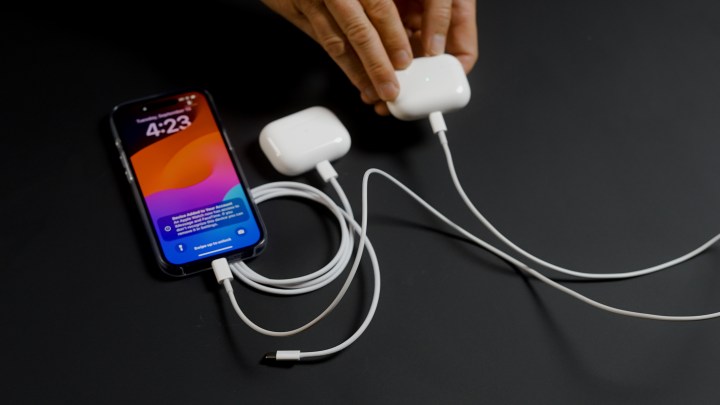
I was curious if you could also charge the AirPods Pro 2 with Lightning case using an iPhone 15, so I tried it, and I can confirm that the AirPods Pro 2 Lightning will charge that way using a USB-C to Lightning cable that you may already have.
So that’s USB-C. What else is new? IP54 protection, which means dust resistance has been added. Let’s not dwell on that too much. It’s a nice step forward, but these things aren’t waterproof yet. I look forward to the day I can safely shower with my wireless earbuds. Don’t judge me.
iOS 17 improvements
So is that it? Is that all that’s new? No, there’s more, but first, let’s look at some of the new features that were released alongside the new USB-C AirPods Pro, but are not limited to the new AirPods Pro — these are available if you have the Lightning version as well, so long as you are running iOS 17 and your AirPods Pro have the latest firmware.
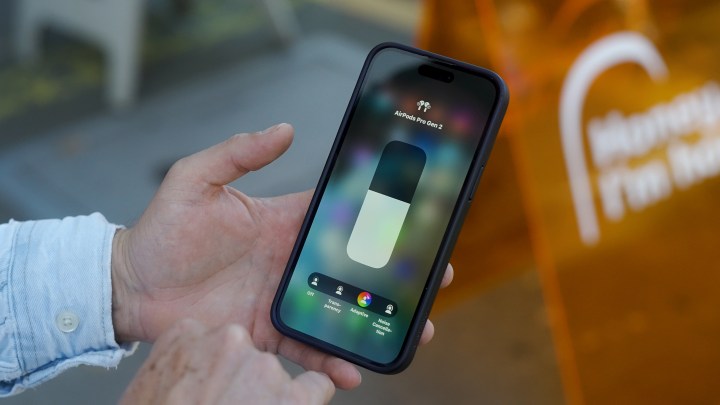
I’m talking about Personalized Volume, Conversation Awareness, and Adaptive Noise Control. Here’s what these three features are supposed to do.
Personalized Volume
Personalized Volume is meant to adjust the volume of your music or podcast — or whatever media it is you are listening to or watching — based on the noise level of your surroundings. It also learns your volume preferences over time and starts automatically delivering your media at what it learns is your preferred volume, so you don’t have to go reaching for the volume control nearly as often. Eventually, I think you won’t even know this is turned on. But if you were to turn it off after getting used to it, I would bet you would miss it.
Conversation Awareness
Conversation Awareness is Apple’s take on a feature we’ve seen attempted by other headphone makers. Conversation Awareness will allow your AirPods to lower the volume of your media when you start talking. It won’t engage just because someone talks to you. But once you start speaking, not only will it lower the volume of whatever you’re listening to, it will focus on the voices in front of you and tune into those, kind of like an automated transparency mode, but a little more focused for conversations. Now, if this feature actually works, I’ll be thrilled.
While I appreciate attempts at this feature by, say, Sony, for example, on its XM5 headphones and earbuds, what I have found is that any sufficiently loud noise will trigger it, turning off noise canceling and piping surrounding audio in. This is not good if what sets off the feature is something like a lawn mower or leaf blower, or some other loud piece of gear. I very much do not want that noise piped in as if I’m having a conversation with it. So, if Apple has this truly dialed into voices and nothing else sets it off? That would be transformative.
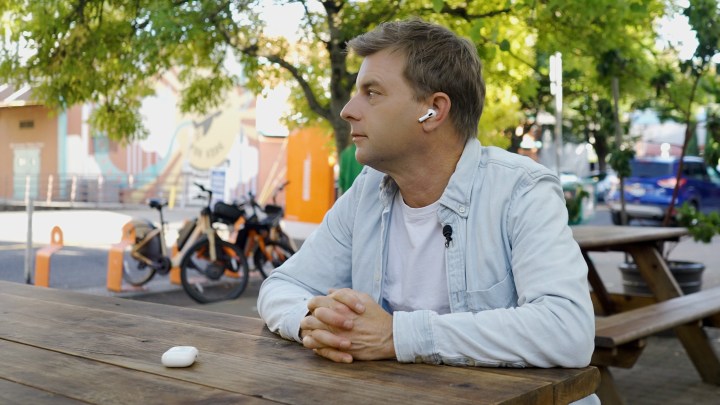
Adaptive Noise Control
Finally, there’s Adaptive Noise Control. This feature, which also uses machine learning and AI, blends noise canceling with transparency mode. The idea is to cancel out the noise you don’t want, but let in the sounds you do want to hear. So, let’s say you’re on a flight. You want the whir of the engines to be canceled out, but you do want to hear any announcements made by the crew. Adaptive Noise Control makes that possible.
I’m really curious to see if and how this works and whether it’s something I’ll use all the time, or just in certain scenarios.
Real-world use
I took the AirPods Pro 2 out on a run for coffee to get some real-world experience with them. Let’s start with Personalized Volume. I could tell it was starting to learn. Shortly after starting to watch a video, the volume, which was set lower than I usually have it, started to increase automatically. It matched the volume level at which I had been listening to music earlier. I tend to listen to videos at a slightly lower volume, so I’m interested to see if the system can detect the media source and type and alter it accordingly. But I think I’ll need to use this for more than a couple of days before I’ll know. I’ll update this review when I’ve had a chance for more long-term use.
This works far better than any other version of this feature that I’ve experienced before.
As for Conversation Awareness? Well, I haven’t gotten to my leaf blower yet, but I did use a very loud AirHood vent fan and put my face right up next to it, and Conversation Awareness did not kick in. It also didn’t kick in when someone really close to me started talking. And it didn’t kick in when a bus rolled by outside, so this works far better than any other version of this feature that I’ve experienced before, and I’m loving it. The moment I speak, transparency kicks in and I can hear myself, so I’m not speaking unnecessarily loudly, and I can clearly hear who I’m talking to. This is legitimately real-life helpful.
The Adaptive Noise Control doesn’t work exactly as I had imagined it. But, to be honest, how I had imagined it might work would probably be extremely annoying. Of course, I can only say that having experienced how Apple has envisioned it, I think Apple got this one right.
It really is a hybrid of noise-canceling and transparency mode. The noise-canceling is pretty light just walking around. If I don’t have music playing, I can hear cars going by and other street noises. But as soon as there was a droning sound, that got knocked down significantly. The AirHood fan and a microwave were both knocked down in volume by what I judged to be about 50%, as opposed to the 90% or so that you would get from full-on noise canceling. But as the AirPods Pro 2 were quieting down the fan, I was still able to hear someone speaking to me.
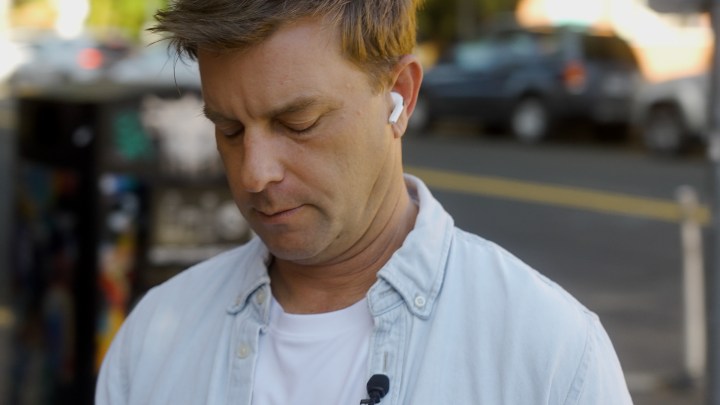
The noise cancellation doesn’t act as quickly in Adaptive Noise Control mode as it does in full noise-canceling mode. It takes a couple of seconds for it to calm this fan noise down. It’s not snail’s pace slow, but it does sound like someone is just turning the volume down on the fan noise generator.
Again, I’m curious to see how this feature evolves over time and how I like implementing it into my daily use of the AirPods Pro 2. I do think that adaptive noise control is really best for folks who wear their AirPods Pro all the time and don’t really want to ever take them out. That’s not me. But I can still see myself using it selectively. And overall, I think this was a smart development from Apple.
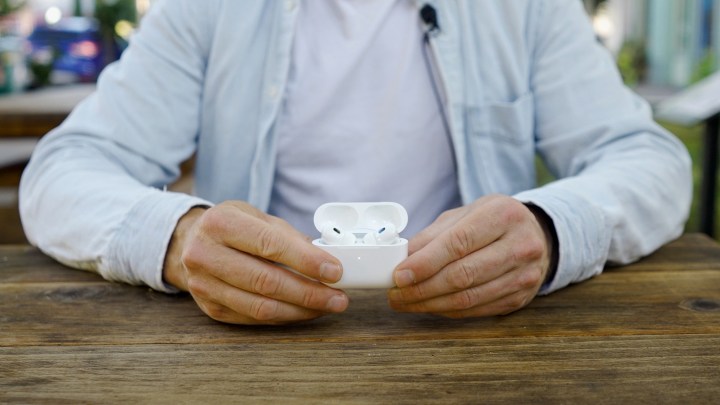
One thing is certain: I can’t think of another brand of earbuds or full-sized headphones that can do what the AirPods Pro 2 can do with these new iOS17-enabled features. Other brands have transparency or passthrough modes, they have dialogue detection, and some of them have adjustable levels of noise cancellation. Sony has all three of those. But none of them are executed nearly as well as Apple is executing them here. So, I’ve got to give all three a pretty enthusiastic thumbs-up. I’m going to enjoy using them, and not just for fun, but because it’s practical. It’s a small thing, but I can see how this is going to keep AirPods Pro in people’s ears for longer. And if that was Apple’s goal, then I think we will see in short order that it has succeeded.
Again, as a reminder, those three features work with your existing AirPods Pro and the new AirPods Pro with USB-C. But, I did say there was more that’s new about the AirPods Pro with USB-C that I’d talk about later. So, let’s do that.
Redesigned ‘audio architecture’
Some of this is shrouded in mystery, some of it is just flying under the radar. So, Apple has said that it has redesigned the “acoustic architecture” inside these new AirPods Pro. The H2 chip is still in there. Apple won’t get super specific about it, but it seems like the redesign is a combination of hardware, software, and programming changes all put together.
But what does it mean for you?
Well, it doesn’t mean dramatically different sound quality for day-to-day use — yet. As I listen to Apple Music, using Spatial Audio and standard stereo, I don’t perceive any super notable differences in fidelity, whether I’ve got ANC on full bore, turned off, or while using Adaptive Noise Control.
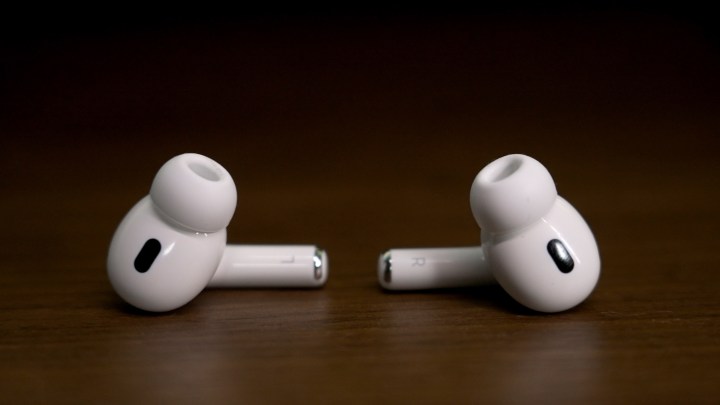
However, we do know that the new AirPods Pro 2 with USB-C can do uncompressed lossless audio wirelessly — but only with the forthcoming Apple Vision Pro headset. Now, I’ve learned a little more about this, but some things remain a secret.
What I can tell you is that it is not Bluetooth. And there is no wireless audio codec involved. It’s not FLAC, or AptX, or anything like that. It is raw, uncompressed, lossless audio at up to 20 bits.
What’s the technology allowing that? Well, we can only guess. I would say it is something akin to Ultra Wideband, which is the wireless tech that lets AirTags do their thing so well. But Apple would not say that, because Apple made this end-to-end, so it is not what we know as Ultra Wideband. We also know that the new case is not involved here. This is a communication protocol, again, for now, between the new AirPods Pro H2 chip and the H2 chip in the new Apple Vision Pro.
We also do not know what that wireless lossless range might be. But usually when you go up to higher bit rates, the range drops, so I would imagine it would be shorter than Bluetooth.
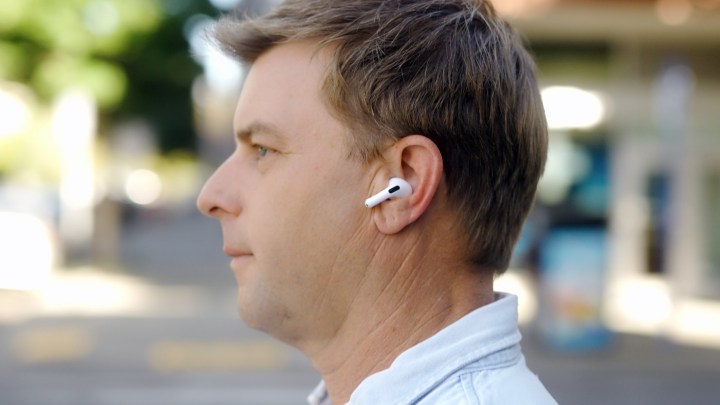
Now, 20-bit may sound like an odd number. We’re used to hearing about 16-bit or 24-bit. But in Apple’s world, 24-bit merges into High-Res uncompressed lossless audio, and this isn’t quite that. But it can be higher than CD-quality, which is 16-bit. I know, it’s weird to bring CDs into the conversation because it’s so far away, technologically. But that’s a common 16-bit reference point.
Why any of this matters
Before you go poo-pooing uncompressed lossless wireless audio as something only true audio nerds care about, this is a big deal, in my opinion.
Remember, I mentioned my daughter earlier. I brought her up because not only did she have a good time checking out these new Apple products before anyone else she knows — and yes, I made her sign a strict embargo — but she and I ended up having a conversation about how much she hates Spotify because even at its best settings, it sounds flat to her compared to Apple Music lossless. That’s my girl. I’m so proud. But, yeah, it is possible to hear a difference. I think it is pretty obvious. For others, it may be more subtle. But it is 100% there. And, frankly, I’ve ditched Spotify almost entirely in favor of Apple Music for audio fidelity reasons alone.
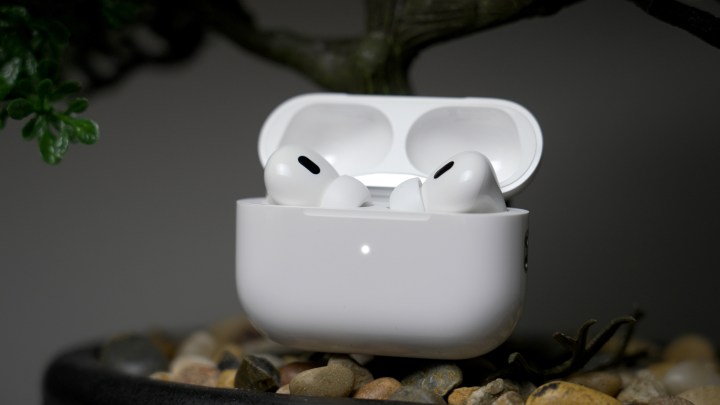
Perhaps this uncompressed lossless audio is relegated to the pairing of these new AirPods Pro USB-C and an Apple Vision Pro for now, but it won’t be like that forever. The next natural progression of this wireless audio technology is for it to move beyond the confines of the Vision Pro, and into the Mac, the iPhone, and the iPad. It can be done. Apple could do it right now. But knowing Apple, I think it’s going to wait a bit. It’s going to see how things go with Vision Pro, which provides a small test bed of enthusiasts, and it is going to work on how to make it the best possible experience for iPhone, iPad, and Mac users. So, it could be a while. But this is real technology, and it is around right now.
That’s what’s most exciting to me about these new AirPods Pro USB-C. They can do a lot now, but it looks like they will be able to do even more in the near future. And, I’m here for it. This could be big.
Worth the upgrade?
Hopefully, at this point you have a feel for whether you really need the new AirPods Pro 2 with USB-C now — call them the AirPods Pro 2.5, if you must — or if you’ll be good with your AirPods Pro 2 Lightning for a while.
It’s nice to have a choice, for now. Before you know it, only the USB-C version is going to be around. I’d say if you want the latest and greatest, that IP54 and that USB-C, well, here they are!
But if all you wanted to do was be able to charge your AirPods with your iPhone 15 and enjoy some of the new audio-processing features? Well, you can do that with what you’ve got, and maybe shouldn’t feel so pressed to spend on the upgrade.
Editors' Recommendations
- Best Apple deals: Save on AirPods, Apple Watch, iPad, MacBook
- Best AirPods Max deals: New and refurbished for $440
- AirPods 4: Everything we know about Apple’s next wireless earbuds
- Best Apple AirPods alternatives for 2024: Bose, Sony, Marshall, and more
- Did your AirPods Pro noise cancellation just get worse?


